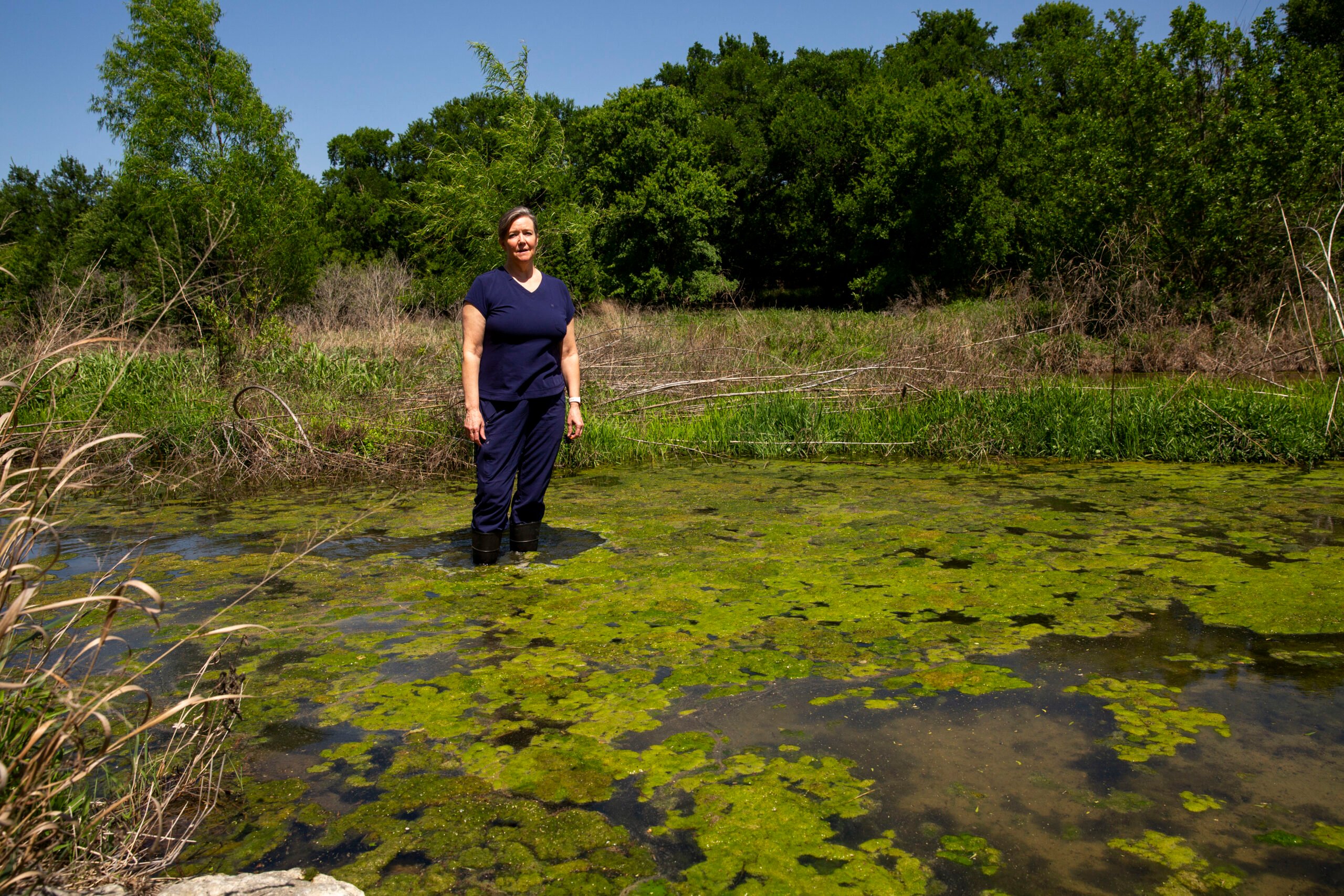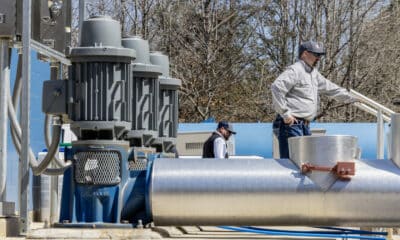News from the South - Texas News Feed
Winners and losers in the Texas House committee assignments
Winners and losers: Who came out on top — and who didn’t — in the Texas House’s committee assignments
“Winners and losers: Who came out on top — and who didn’t — in the Texas House’s committee assignments” was first published by The Texas Tribune, a nonprofit, nonpartisan media organization that informs Texans — and engages with them — about public policy, politics, government and statewide issues.
Sign up for The Brief, The Texas Tribune’s daily newsletter that keeps readers up to speed on the most essential Texas news.
House Speaker Dustin Burrows announced his highly anticipated committee appointments on Thursday, laying the groundwork for legislation to start moving through the lower chamber.
The committee assignments relied heavily on the leadership team of Burrows’ predecessor and close ally, Rep. Dade Phelan, R-Beaumont. Yet Burrows also gave nine lawmakers their first opportunity to lead a committee. As always, there were only so many chair positions to go around, with 30 standing committees for 88 Republicans, making it inevitable that some members would miss out on plum appointments.
Adding an additional wrinkle this year, a new House rule banned members of the minority party from helming committees, which meant Burrows had to consider how to divide the spoils among Republicans — many of whom did not support him for the speakership — while still making sure the Democratic coalition that won him the gavel received enough crumbs to be satisfied.
Here is a breakdown of some of the winners and losers of Burrows’ first-ever committee appointments.
Winners
Burrows
The Lubbock Republican had fielded criticism from the far-right of his party since the moment he announced he would run to replace Phelan as speaker. But on Thursday, Burrows, who hardline conservatives accuse of being too cozy with Democrats, seemed to have pulled off a tough balancing act, rewarding his closest allies and elevating new ones while neutralizing many critics.
He appointed four Republicans who voted against him to chairmanships, including one of Phelan’s GOP rivals for the speaker’s dais, fellow Panhandle Rep. John Smithee of Amarillo, who was appointed to lead the Criminal Jurisprudence Committee. Burrows also tapped two former speaker hopefuls, Rep. David Cook of Mansfield and Rep. James Frank of Wichita Falls, to lead new subcommittees.
Democrats, who suffered a blow by losing their ability to lead committees, still seemed pleased with their committee assignments. Burrows appointed Democrats to lead six of the 12 standing subcommittees, and El Paso Democratic Rep. Joe Moody was named speaker pro tempore, a largely ceremonial position that nonetheless gave the minority party another win.
Keeping the Democrats happy is crucial for Burrows because they make up the majority of his tenuous coalition. He was elected speaker with the support of 49 Democrats and 36 Republicans. But he also made enough Republicans happy to avoid sparking an uproar within his own party.
Republicans who switched their support to Burrows
Burrows followed an unsteady path to the speaker’s dais after he announced his candidacy in December. When the House Republican Caucus soon after endorsed Cook, his main GOP opponent, Burrows said in a news conference he had the necessary 76 votes to win the speaker’s gavel. But only hours later, lawmakers started taking their names off his list, dropping him below the majority threshold.
The battle for uncommitted and flippable lawmakers continued into the first day of the session, with neither Cook nor Burrows having a clear lock on 76 votes heading into the speaker election that day. Lawmakers who eventually flipped from Cook to Burrows were handsomely rewarded in their committee assignments.
Rep. Caroline Fairly, a Republican from Amarillo who announced the morning of the speaker’s election that she was flipping her vote to Burrows, was appointed to the budget-writing Appropriations Committee, a major assignment for a first-time lawmaker.
Magnolia Republican Rep. Cecil Bell Jr. also benefited from backing the right horse at the last minute. Bell initially went along with the GOP caucus and pledged to support Cook, but he switched his vote to Burrows on the first day of the session expressing frustration about the rhetoric from Cook’s supporters, which he compared to “having neighbors who constantly blare noise all day and all night in mind-numbing disregard of time and civility.” Now, the seven-term lawmaker and long-time budget writer will helm his first committee after being appointed to lead the newly created Intergovernmental Affairs Committee.
Burrows also rewarded Republican lawmakers who voted against him in the first round of the speaker’s vote but switched in the second round to help get him over the top. That group includes Rep. Sam Harless of Spring, who will lead the Corrections Committee, and Rep. Tom Craddick of Midland, a former speaker and the chamber’s longest-serving member, who will head the Transportation Committee.
Veteran Democrats who backed Burrows
Democrats knew they were likely to lose their ability to lead committees after a wave of establishment Republicans were swept out of the chamber by insurgent primary challengers who ran, in part, on upending the system of power-sharing. Republicans then picked up two more seats in the November general election, further limiting Democrats’ leverage in shaping how the House would operate.
They bet on Burrows to somehow continue the bipartisan tradition that had prevailed in the House since the 1970s. Burrows did not disappoint those lawmakers, rewarding them with leadership positions.
Veteran Democrats like Reps. Rafael Anchía, Terry Canales and Chris Turner were tapped to lead standing subcommittees on telecommunications, transportation and property tax appraisals, respectively. Houston Rep. Gene Wu, the House Democratic Caucus chair, landed a spot on the influential Appropriations Committee. He was also appointed vice chair of the Criminal Jurisprudence Committee and he will serve on the subcommittee on juvenile justice, both areas of focus over his prior six terms.
A few Democrats also received multiple leadership slots, including Rep. Oscar Longoria of Mission, who was appointed chair of the subcommittee on workforce and vice chair of the subcommittee on international relations. Austin Reps. John Bucy, Sheryl Cole and James Talarico were each appointed vice chairs of a standing committee and a subcommittee.
Several less-experienced Democrats who were in Burrows’ corner early scored leadership roles, too. A pair of second-term Democrats, Rep. Christian Manuel of Beaumont and Rep. Venton Jones of Dallas, won coveted appointments to the Appropriations Committee while also being appointed vice chairs of the Human Services and Corrections committees, respectively. And two Democratic freshmen, Reps. Cassandra Garcia Hernandez of Farmers Branch and Lauren Ashley Simmons of Houston, were appointed to the Appropriations Committee. Garcia Hernandez was additionally tapped to be vice chair of the subcommittee on state-federal relations.
First-time chairs who stuck with Burrows despite pressure to defect
Lawmakers who backed Burrows faced a barrage of text blasts and other attacks from hardline conservatives who were determined to defeat him in the speaker’s race. But those who hung tough with Burrows saw their loyalty pay off.
Among them was Rep. Lacey Hull of Houston, who received sustained backlash on social media as the only Republican from Harris County to not line up behind Cook. She went on to give a fiery nomination speech for Burrows on the House floor, and she was rewarded with an appointment to chair the Human Services Committee, her first leadership position since she joined the House in 2021. Hull is also on the influential State Affairs Committee this session.
Reps. Cole Hefner of Mt. Pleasant, Keith Bell of Forney and Jay Dean of Longview also were tapped to lead their first standing committees after being some of Burrows’ most loyal supporters. The three stood with Burrows at a news conference in December as he announced he had enough votes to win. Dean in particular went on local TV stations in East Texas to voice his support for Burrows even amid threats of censure by his local Republican county parties.
Non-committee-eligible Republicans who stuck with Burrows
Though committee chairmanships are traditionally reserved for members who have served at least two terms, some freshman and sophomore Republicans still landed plum assignments after they sided with Burrows despite pressure to defect.
Rep. Carl Tepper, one of Burrows’ earliest and loudest supporters and a fellow Lubbock resident, was placed on the budget-writing Appropriations Committee, along with the Calendars Committee, which controls the flow of legislation, and Intergovernmental Affairs Committee, which was created with broad jurisdiction to consider a sweeping range of bills.
Another Burrows supporter, sophomore Rep. Janie Lopez of San Benito, scored appointments to the Appropriations and Calendars committees. And two Republican freshmen, Reps. Jeffrey Barry of Pearland and Denise Villalobos of Corpus Christi, were placed on Appropriations.
First-term GOP Rep. John McQueeney of Fort Worth also won a spot on the key State Affairs Committee, a rarity for a freshman. McQueeney backed Burrows even after Attorney General Ken Paxton held a rally in his district as part of a tour to pressure House lawmakers to back Burrows’ rival for the gavel.
Losers
Democrats
There’s no way around it: Compared to where they stood in the 2023 session, Democrats emerged as losers. After last year’s elections, House Republicans had not only increased their ranks by two members, to a total of 88 of the chamber’s 150 seats, but they also were bringing back more socially conservative politicians who were bent on ending the tradition of power-sharing with the minority party.
That meant that after 22 years as the minority party in the House, Democrats finally lost their ability to run standing committees this year, under a rules package adopted by lawmakers last month that dictates how the lower chamber will operate. Democrats are also outnumbered by Republicans on every committee and subcommittee, unlike before.
Wu, the House Democratic leader, highlighted the positives in his statement, pointing to the minority party’s 30 vice chair positions and the 10 members who will serve as subcommittee chairs or vice chairs.
Aside from barring Democratic chairs, the new House rules also expand the power of vice chairs by allowing them to request witnesses and hearings on bills or topics. Additionally, the speaker can refer bills to subcommittees, some of which are chaired by Democrats. But any way you slice it, Democrats chaired eight of the 34 standing House committees last session, and that number has been reduced to zero.
Republicans looking for a fight
Republicans who were hoping for more fodder to condemn Burrows’ leadership — or anyone hoping to watch Republicans tear each other apart over committee appointments — largely came away disappointed.
There were some scattered complaints by hardline conservative activists and a handful of House Republicans who charged that Burrows had “kept Democrats in power.”
Rep. Brian Harrison of Midlothian posted on social media his displeasure that Burrows had named a Democrat as speaker pro tem, and Rep. David Lowe of North Richland Hills shared an infographic implying that giving Democrats vice chair positions amounted to keeping them in power.
But for the most part, Burrows avoided much public criticism, even among the new socially conservative batch of freshmen who made up much of the self-proclaimed “reform caucus” that opposed Burrows’ speaker bid. Usually vocal critics like Reps. Mitch Little of Lewisville, Shelley Luther of Tom Bean and Katrina Pierson of Rockwall either celebrated their committee assignments or kept their powder dry.
Republican chairs who opposed Burrows
A few Republicans took a big risk last year when they decamped from Phelan’s team to advocate for a change in House leadership. Many of those lawmakers found themselves in the doghouse under Burrows’ appointments.
Reps. Briscoe Cain of Deer Park, J.M. Lozano of Kingsville and Tom Oliverson of Cypress were among Phelan – and then Burrows’ – biggest critics and they all respectively lost their committee chairmanships on Thursday.
Not all chairs who went against Burrows were completely left out in the cold, however. Burrows tried to bring Smithee and Frank, both former contenders for the gavel, back into the fold, and Rep. Ryan Guillen of Rio Grande City — who defected to Cook on the day of the speaker election — was tapped to replace Cain as chair of the Agriculture and Livestock Committee.
Lozano previously chaired the Urban Affairs Committee, which was abolished and folded into the new Intergovernmental Affairs Committee chaired by Keith Bell, the late defector to Burrows. Oliverson was replaced as Insurance Committee chair by Dean, the Longview Republican.
This article originally appeared in The Texas Tribune at https://www.texastribune.org/2025/02/14/texas-house-committee-assignments-chairs-winners-losers/.
The Texas Tribune is a member-supported, nonpartisan newsroom informing and engaging Texans on state politics and policy. Learn more at texastribune.org.
News from the South - Texas News Feed
Dish Soap: The Versatile Cleaning Hero You Didn’t Know You Needed
SUMMARY: Dish soap is a versatile cleaning tool that goes beyond washing dishes. It can remove hair dye from skin, clean makeup brushes, reduce condensation on windows, stop squeaky doors, and even clear clogged drains. Dish soap works as a gentle insecticide for plants and is effective for cleaning various surfaces. Consumer Reports highlighted top picks, with Dawn Ultra praised for its suds and Gain Ultra Clean for affordability. However, dish soap shouldn’t be used in dishwashers or washing machines as it creates excess suds that can damage appliances. Additionally, excessive use on skin or hair can strip natural oils.

Discover the incredible versatility of dish soap, a kitchen staple that does more than just cut through grease. Consumer Reports unveils how this soapy superhero can tackle a variety of messes around your home, making it the secret weapon hiding in plain sight.
News from the South - Texas News Feed
Mostly cloudy, slight chance of storms west of SA tonight
SUMMARY:
Title: Mostly cloudy, slight chance of storms west of SA tonight.
Summary: Good Monday morning! I’m meteorologist Justin Horn sharing the forecast. Today will be mostly cloudy with temperatures near 90. Although there’s a slight chance of showers tonight due to potential storms from Mexico, it’s unlikely to impact the river parade. Tomorrow should remain quiet, but expect increased rain chances midweek, particularly Wednesday evening with possible strong thunderstorms. A 40% chance of rain is forecast for Wednesday, along with similar chances on Thursday and Friday. Stay weather-aware, especially with ongoing Fiesta events, but no need to cancel plans.

Better chances of rain by midweek.
News from the South - Texas News Feed
In Booming Central Texas, Wastewater Is Polluting Rivers and Streams
Editor’s Note: This article originally appeared at Inside Climate News, a nonprofit, independent news organization that covers climate, energy, and the environment. It is republished with permission. Sign up for their newsletter here.
Margo Denke set out to rally the town when she learned that a Christian youth camp planned to build a wastewater treatment plant and discharge its effluent into the pristine Hill Country creek that ran through her small ranch.
Denke, a 1981 graduate of Harvard Medical School who moved to the Hill Country in 2013, printed fliers, put them in Ziploc bags and tied them to her neighbors’ cattle gates in the tiny community of Tarpley, population 38. A coalition of families pooled resources, hired a lawyer and dug in for a yearslong battle.
Theirs was one of many similar struggles that have unfolded in recent years across Central Texas, where protection of creeks and rivers from treated wastewater discharge often falls to shoestring community groups as an onslaught of population growth and development pushes ever deeper into the countryside.
“All this would have been destroyed,” Denke said in April as she surveyed a spring-fed stretch of Commissioners Creek. “Raising the money to fight this is not easy. But you have to, you can’t let this just slide by.”
Eventually, the camp owner, who did not respond to a request for comment from Inside Climate News, agreed in settlement negotiations not to discharge into the creek. Instead, they would spray their treated effluent over their own property—an increasingly popular means of wastewater disposal. In exchange, the neighbors would drop their opposition to the two-story dam the camp erected for a private lake and waterpark on little Commissioners Creek.
“I’m trying to stay positive about it,” Denke said. “It was a huge win.”
But the battle never ends amid the rapid pace of development in Texas. Several miles downstream, another subdivision developer wants to treat wastewater and discharge it into Hondo Creek. And in a neighboring watershed, another community group recently stopped another Christian youth camp from discharging into the Sabinal River.
Similar stories repeat throughout Central Texas, where two decades of booming population growth have come with a massive increase in domestic wastewater—mostly human sewage. The effluent from wastewater treatment plants appears clean and clear, but it contains high levels of organic nutrients that can cause algae blooms and devastate native aquatic ecosystems when dumped into streams and rivers.

“Unfortunately, society at large has no idea,” said Jeff Back, a staff scientist at Baylor University who has studied nutrient pollution in Texas waterways for 20 years. “Developers want to continue to do their business, but they need to be responsible.”
Now, as the state Legislature meets for its biennial session, advocates for water protection are supporting a bill that would prohibit most new discharges of treated wastewater into the state’s last 21 stretches of pristine rivers and streams, as defined by measured nutrient levels. Filed by state Sen. Sarah Eckhardt, a Democrat from Austin, it’s the latest iteration of a bill that groups have tried repeatedly without success to pass in Texas.
It wouldn’t ban development along pristine streams. It would just require other outlets for treated wastewater beside the natural waterways. Plenty of solutions are available on the market, from systems for onsite re-use to treatment methods that remove the nutrients from wastewater.
“People have to understand that it’s not going to be free,” Back said. “People want to do everything as cheaply as possible.”
The luxury of doing things cheaply might not last forever. As Texas cities begin to outgrow their water supplies and state leaders increasingly recognize shortages looming on the horizon, there may come an end to the days of showering lawns with drinking water while dumping treated effluent into rivers for disposal.
“This effluent should be considered a resource, not a nuisance to get rid of,” said David Venhuizen, a civil engineer in Austin who sells hardware for on-site water reuse.
It could be used to irrigate and fertilize the turf grass of parks, sportsfields, golf courses and private lawns, which make up the bulk of municipal summertime water use in Texas. In existing cities, such reuse has proven prohibitively expensive because plumbing from wastewater treatment plants is expensive to run out to individual customers.
New development, however, could be built to incorporate on-site wastewater reuse, said Venhuizen. His system, buried underground like a septic system, can treat a household’s wastewater, then drip it beneath the lawn. It could also be adapted at neighborhood scale for subdivisions to create a decentralized network of wastewater treatment and local redistribution.
But the breathless pace of suburban sprawl in Texas leaves no time to pause and make systemic changes. Instead, Texas cities run pipelines to distant aquifers to meet the ever-growing needs of new neighborhoods that will use most of their drinking water on lawns while piping away their effluent for treatment and discharge into a creek.
“We’re going to continue to rely on extraction instead of any regenerative kind of water systems,” said Venhuizen, 78, on a rocking chair in his backyard fitted with rainwater collection tanks and covered in native plants. “The madness has to stop.”
Stephanie Morris bought a house on the South Fork San Gabriel River, 27 miles north of Austin, in 2013. She wouldn’t have done it if she knew what the beautiful river would become.
When she and her family moved in, Morris said, the neighbors were already exhausted by a long-running battle with the neighboring city of Liberty Hill over its discharge of treated wastewater into the river about a quarter mile upstream.
Back then, Liberty Hill had about 1,000 residents, and its discharge created relatively minor algae problems in the river. Then its population exploded, like many other small cities of Central Texas. Now almost 15,000 people live in Liberty Hill, most of them relying on the South Fork San Gabriel for their wastewater disposal needs.
“There’s a hell of a lot more people pissing in the pond,” said Morris, a high-risk labor and delivery nurse, as she trudged through the green, mucky river in high rubber boots. “Every year things would get worse as their volume increased.”
All those nutrients, primarily from human waste, have caused the riverbed to choke up entirely with algae at times, extending three to five miles downstream and burying native ecosystems. When the algae dies, it sinks and rots in heaps of black, stinking muck.
Year by year, Morris became increasingly involved, until she spent all of her free time trekking the riverbed and taking photos of the destruction to show to her elected representatives, commissioners of the TCEQ and judges at the administrative law courts in Austin.
As a result, the TCEQ has twice reduced the concentrations of phosphorus that the Liberty Hill plant is permitted to discharge, although its overall volume continues to increase. The river looks better today than it did several years ago, Morris said. But the fight has nearly exhausted her.
“This has cost so much time and money, it’s not even funny,” she said. “Private citizens should not have to be enforcing the environmental standards of the state.”
The story of the South Fork San Gabriel, and the pictures that circulated online, jolted other communities to fight against proposed discharges in their areas, said Annalisa Peace, executive director of the Greater Edwards Aquifer Alliance, a group that helps its member organizations challenge the proposed discharge permits in the 21 counties that overlie the Edwards and Trinity aquifers.
“It’s incumbent upon the citizens and GEAA to raise the money for the legal fees to do all this,” Peace said. “It seems to be that the burden is placed on the average citizen.”
Most new wastewater sources come from new housing subdivisions and the municipal utility districts that are established to serve them, she said. Others are commercial projects, from summer camps to music venues, that plan to treat their own wastewater. Much of the new construction, especially near pristine streams, takes place outside of any city’s jurisdiction so it faces little regulation or oversight.
Previous attempts to pass statewide regulations of discharges into waterways have repeatedly failed, said Peace, who has worked with GEAA for 20 years. Much of the resistance comes from lobbying by major homebuilding companies that are making big money off explosive population growth in Texas.
“It’s the big nationals that we’re really seeing the most intransigence and the most organized opposition from,” she said. “They don’t like regulation.”
The Texas Association of Builders declined to comment on this report.
Peace wishes for a law increasing treatment standards for wastewater discharge into all Texas waterways. But she’ll settle for the current bill, which protects just the remaining pristine segments, and provides exemptions for cities and river authorities.
Outside the Texas Legislature, groups have had more success challenging individual permits. Such was the case on the Upper Sabinal River, where another Christian youth camp, operated by the national nonprofit Young Life, proposed in 2019 to build a wastewater treatment plant that would discharge into the river. Local landowners rallied. They gathered 25,000 signatures on a petition and hired a lawyer to challenge the discharge permits.
Faced with an extensive delay in state administrative courts, Young Life opted to settle instead. Young Life did not respond to a request for comment.
“Once this became a high-profile issue, they were willing to look at alternatives,” said Jeff Braun, a landowner on the upper Sabinal River and a spokesperson for the Bandera Canyonlands Alliance, which fought the permit. “I think it hit a chord with a lot of people that are native Texans because they all love these iconic streams.”
In an announcement of the settlement agreement in August 2021, Young Life said it would reuse most of its wastewater on-site for irrigation rather than discharging into the river. Regulators call this practice “land application,” and it’s growing in popularity.
By banning discharges into pristine streams, the bill in the Legislature would effectively force developers in those areas to use land application for wastewater disposal. Although the practice is less impactful to waterways than direct discharge, it can still do damage.
Mike Clifford, technical director at the Greater Edwards Aquifer Alliance, said that opposition from community groups has already pushed many developers to seek land application permits.
“The problem now is we just have too many of these,” he said. “They’re popping up everywhere.”
The TCEQ has issued 413 active permits for land application of treated wastewater, according to online records, and 2,374 active permits for discharge.
For example, community groups are currently fighting a planned 10,000-seat amphitheater, luxury hotel and condominium complex on 84 acres nestled next to the Barton Creek Habitat Preserve on Barton Creek, a pristine stream, in Austin. The complex would treat its own wastewater with land application permits to spray up to 120,000 gallons per day of treated effluent onto its property.
Over time, Clifford said, the nutrient pollutants would accumulate until a big rainstorm washes them into Barton Creek. About five miles upstream, on Fitzhugh Road, another proposed 5,000-person music venue wants to treat its own wastewater and discharge it into ponds near Barton Creek.
One solution, Clifford said, would be for Texas to require developers to add nutrient removal to their treatment process.
“It’s just about money,” he said. Nutrient removal “can double the cost of a wastewater treatment plant.”
With adequate investment, plenty of solutions exist. Some could even be configured to make money that covers part of their costs. For example, some treatment systems that remove nitrogen and phosphorus from water do it by growing algae, which could be harvested and sold as fertilizer. To avoid the buildup of nutrients where effluent is sprayed onto land, grasses can be harvested and sold as hay. Irrigation of hay for livestock is the largest water demand driving shortages in parts of Texas and the West.
Eventually, water scarcity will compel urban planners to make use of wastewater rather than dumping into rivers, said Brian Zabcik, advocacy director for the Save Barton Creek Association, which has pushed for discharge protections on Texas pristine streams through several successive legislative sessions.
“It’s crazy that we’re using our highest-quality drinking water to water our lawns and flush our toilets,” he said. “It makes a lot more sense to use recycled wastewater for those purposes.”
Texas might soon have to consider systemic changes as its population continues to boom, temperatures continue to rise, a multi-year drought persists and water shortages approach. Already, changes are beginning in small pockets.
Zabcik pointed to West Texas cities of Big Spring and El Paso, national pioneers in the reuse of treated effluent for drinking water. In Austin, a new city government building features on-site wastewater treatment and recycling for non-potable uses. Consumer products exist to do the same at any home, building or neighborhood.
These aren’t radical practices, said Zabcik, who lives on his grandparents’ ranch in Bell County. Conserving water was part of life for previous generations in Texas. For example, Zabcik said, his grandparents grew a garden, but not with their drinking water; they ran in a pipe from their stock tank. The water from their washing machine drained onto the lawn.
Passing protections on pristine streams won’t ban development along those stretches, Zabcik said. It will just require new approaches to wastewater use. Although they remain costly for now, prices may come down as necessity boosts demand for new affordable products.
The timeline will depend on whether Texas finds the political will to implement new wastewater systems in advance, or if it waits for scarcity conditions to force its hand.
“We’ve got to reuse every drop,” Zabcik said. “It’s really stupid to be wasting wastewater.”
The post In Booming Central Texas, Wastewater Is Polluting Rivers and Streams appeared first on www.texasobserver.org
Note: The following A.I. based commentary is not part of the original article, reproduced above, but is offered in the hopes that it will promote greater media literacy and critical thinking, by making any potential bias more visible to the reader –Staff Editor.
Political Bias Rating: Center-Left
The content reflects a strong focus on environmental conservation, community activism, and the impact of development on natural resources. It presents the struggles of local communities in Central Texas against wastewater discharge into pristine rivers, framing these efforts as necessary for protecting the environment. The mention of political figures such as Democrat Sarah Eckhardt and advocacy for regulatory changes indicates a tendency toward policies aimed at environmental protection, often associated with more progressive or center-left positions. The article also critiques the role of developers and industry in resisting regulation, which aligns with a broader environmentalist agenda.
-

 SuperTalk FM6 days ago
SuperTalk FM6 days agoNew Amazon dock operations facility to bring 1,000 jobs to Marshall County
-

 News from the South - Missouri News Feed2 days ago
News from the South - Missouri News Feed2 days agoMissouri lawmakers on the cusp of legalizing housing discrimination
-

 News from the South - Alabama News Feed7 days ago
News from the South - Alabama News Feed7 days agoPrayer Vigil Held for Ronald Dumas Jr., Family Continues to Pray for His Return | April 21, 2025 | N
-

 News from the South - Florida News Feed6 days ago
News from the South - Florida News Feed6 days agoTrump touts manufacturing while undercutting state efforts to help factories
-

 News from the South - Florida News Feed6 days ago
News from the South - Florida News Feed6 days agoFederal report due on Lumbee Tribe of North Carolina’s path to recognition as a tribal nation
-

 News from the South - Oklahoma News Feed6 days ago
News from the South - Oklahoma News Feed6 days agoOklahoma Treasurer’s Office Faces Scrutiny Over Use of Signal in Anti-ESG Coordination
-

 Mississippi Today4 days ago
Mississippi Today4 days agoStruggling water, sewer systems impose ‘astronomic’ rate hikes
-

 Mississippi Today1 day ago
Mississippi Today1 day agoDerrick Simmons: Monday’s Confederate Memorial Day recognition is awful for Mississippians













































